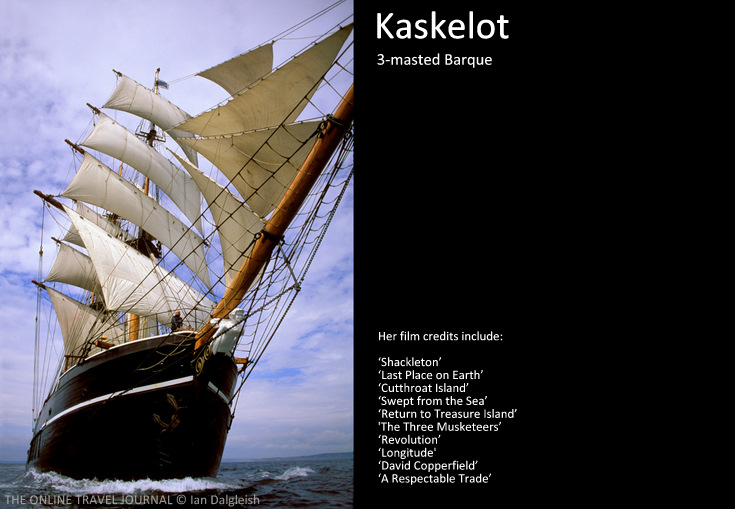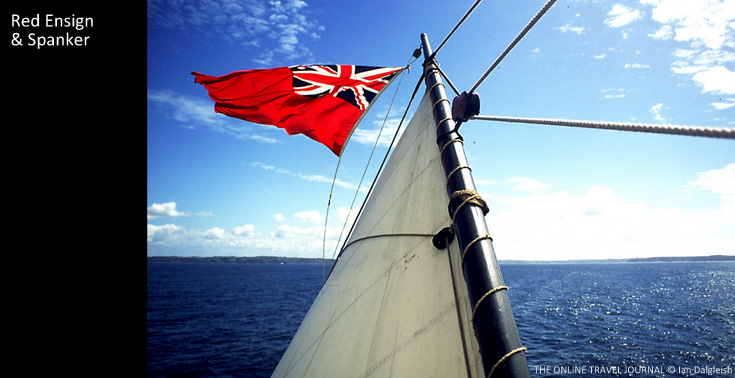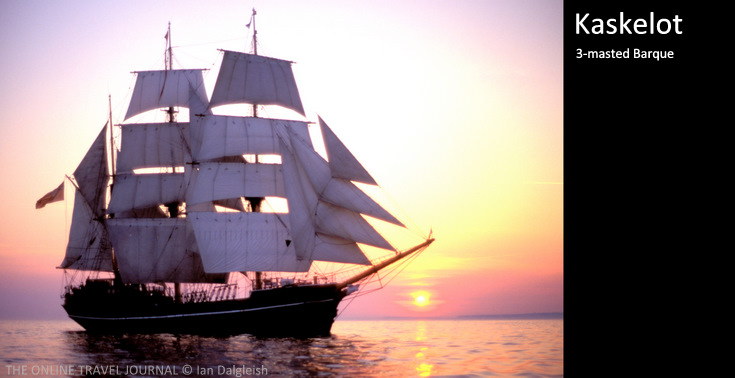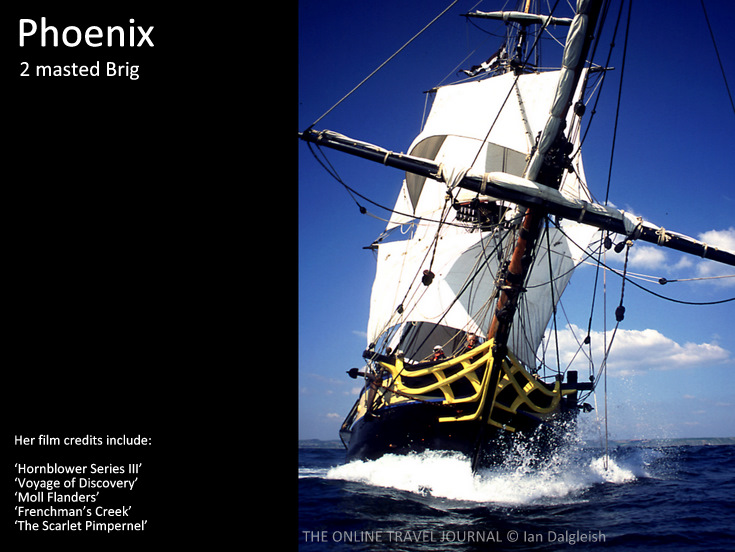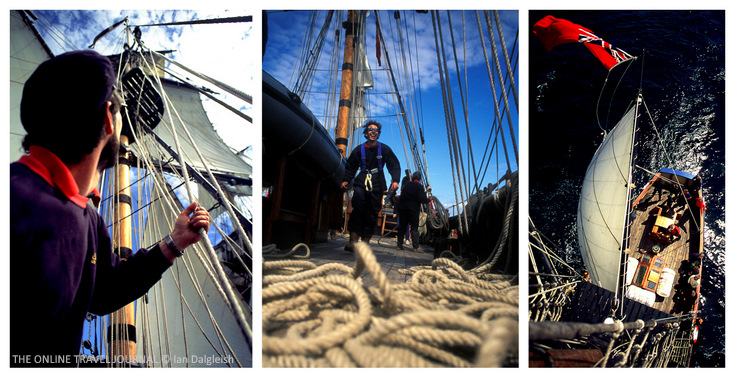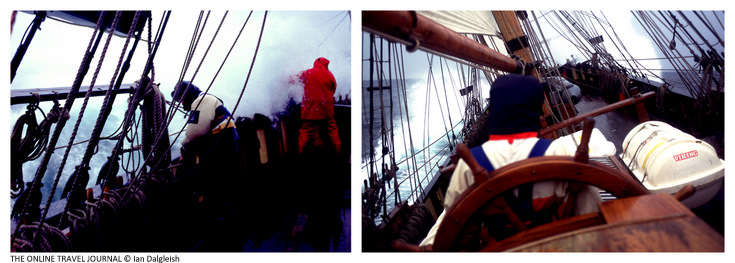Tall Ship Photography
A trip on a traditional sailing ship is an opportunity to experience a unique way of travel, to step back in time
Masts yards, wire, canvas and rope are the mechanisms that harness the power of the wind on these beautiful machines. The drama and beauty of these vessels in their element is something magical, to capture the experience on camera a real privilege. As a professional photographer I have had the chance to sail on a few and to do just that.
Here is a short portfolio of my work along with a few tips and comments on how I got some of the shots. I hope they will inspire you to take a trip yourself and get shooting. For the full experience a hands on trip will get you up close with all these elements and from dizzying heights too.
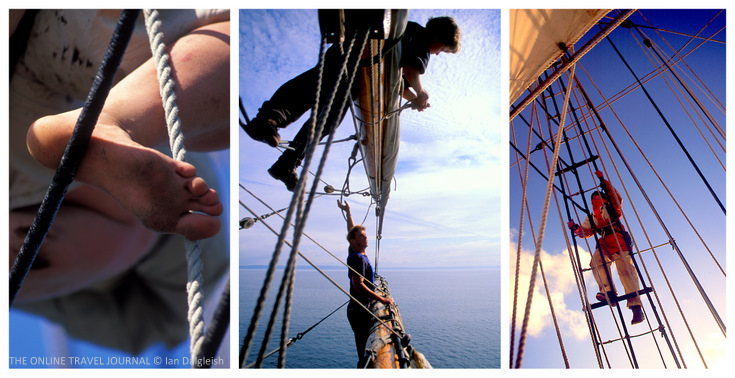 Working aloft close up and dirty, as the feet and pants portray, on a truly tradition ship with oiled and tarred rigging is no place for sailing whites. Aloft I carry my camera slung on my back, the strap around my neck and under one arm to keep hands free for climbing and hanging on, just sliding the camera to the front when I want to take a shot.
Working aloft close up and dirty, as the feet and pants portray, on a truly tradition ship with oiled and tarred rigging is no place for sailing whites. Aloft I carry my camera slung on my back, the strap around my neck and under one arm to keep hands free for climbing and hanging on, just sliding the camera to the front when I want to take a shot.
In this shot I used the rich colour of the ensign (the British Merchant flag) to give the sail some graphic impact. For the sailors amongst you it will also give some indication of wind direction in relation to the spanker.
The light level was getting low as the sun sank towards the horizon but with a very calm sea we were only bobbing gently in the ship’s boat and it was possible to use a slightly telephoto lens at full aperture to get a usable sunset shot.
Phoenix was going like a train. I waited …. waited, camera held low down, till the right moment, then my boatman kicked our little boat out of the way with a burst from the outboard. The shot was taken with a medium wide angle lens.
Working rope miles of it – for the left and centre photos here I used foreground interest to emphasize it’s importance.
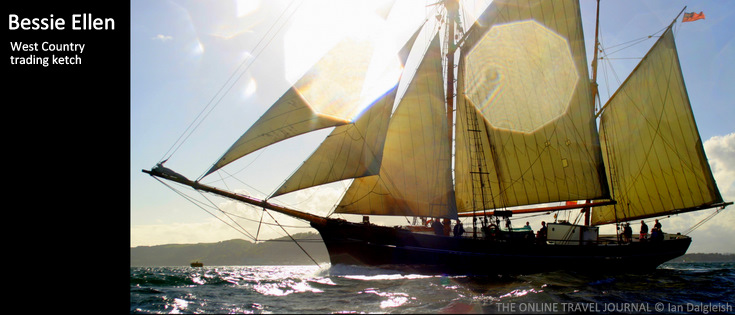 The sun’s rays falling directly on the lens don’t often make for a good result, but it’s always worth trying a few shots of this type to see what you can get. In this case the prism of light on sail sets the image off to effect.
The sun’s rays falling directly on the lens don’t often make for a good result, but it’s always worth trying a few shots of this type to see what you can get. In this case the prism of light on sail sets the image off to effect.
Punching into a big sea the motion can be violent and there is usually a lot of spray about plus the odd solid dollop of sea. On this occasion I had the camera protected with a clear plastic bag taped to the UV filter on the lens with gaffer tape, and myself wedged firmly between some solid bits of ship for stability.
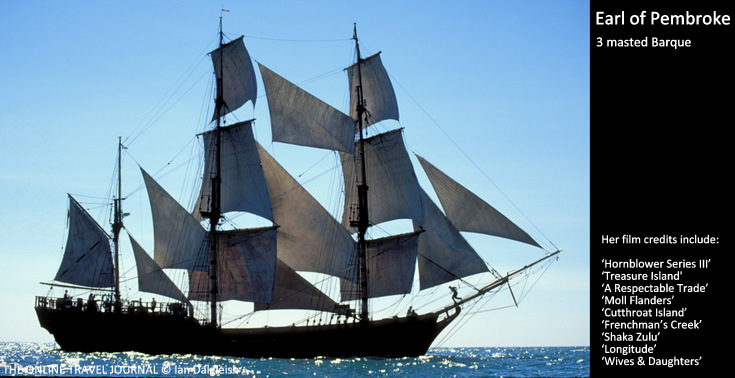
Shooting on-board
Apart from more candid shots around the deck where I used lenses up to 200mm, I found the 28mm lens got most use, within the tight confines of a ship it encompassed the action nicely, whilst still delivering images with a pleasing perspective. Going aloft the 28mm was definitely my favourite lens.
Shooting from the ship’s boat
Your most important asset in this situation is your boatman, their skill and understanding of what you are trying to achieve are vital ingredients for success. Shooting in anything other than a flat calm you will be bouncing about a lot in a little boat so a fast lens for a fast shutter speed is what you need. A lens of 100mm is probably the longest practical length in these conditions. For a close-up dramatic shot go for a wide angle lens with the camera as close to the water as you dare, tilted up to capture the towering masts and sails of the ship – and hope your boatman has a cool head to get you clear in time.
Keeping your lens clear
If there is much spray about you are invariably going to get water droplets on your lens so a soft cloth to hand is essential. At sea it’s salty too - a damp cloth or sponge in a bag is a good idea to it get the worst off first. I started coating my lenses with a water repellent which made a huge difference. Rain•X, sold for keeping car wind screens clear is the brand I use, other photographers I know use motorbike helmet visor treatment which I believe comes in a handy stick form.
Last but not least
A water proof bag or casing for you camera if it’s not an underwater type is a good investment, though you can improvise with polythene bags and duct tape if you can’t get one to fit your camera. And a water proof camera box is a very good idea.
Sail on West Country Sailing Ketch Bessie Ellen
Sail on Pilot Cutter Annabel J
Cruise the Med & Caribbean on classic yacht Kairós
The Photographer
Ian Dalgleish – Photographer for The Online Travel Journal.
Ian specialises in travel and maritime photography, with over 25 year’s experience in the photo industry and runs a multimedia production company.
